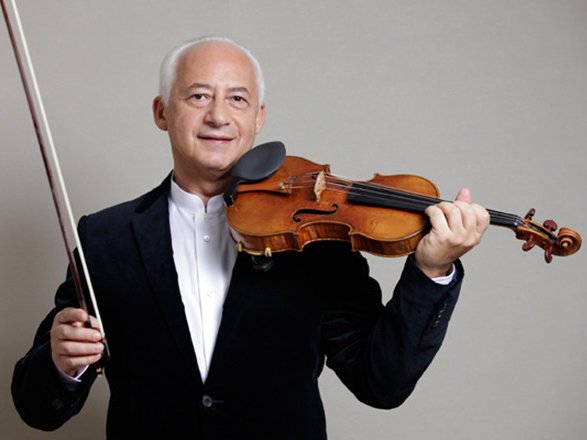Spivakov x Stradivari x Benaroya Hall
The Finest Audible Sashimi
:: for The Stranger
Spivvy if you’re nasty.
Russian master Vladamir Spivakov stroked a Stradivari violin in the Taper Auditorium of Benaroya Hall. Olga Kern played piano. The sounds of the Stradivari in that room was a pairing of instrument and acoustics making for an audible delicacy. The finest, purist, time traveled sashimi possible for the ear.
The violin and piano wound around each other, diving into the lines, reflecting notes and runs with connected lobes.
Igor Stravinsky’s “Suite Italienne” was beyond. Kern scattered celestial webs which Spivakov raised into and out of in gilded beams.
Arvo Pärt’s “Spiegel im Spiegel” was a slower, stoic folding and unfolding. On triangular axes, they both rotated and converged through certain notes and scales. Matching and hitting, then drifting away into sustained fifths and sevenths on others.
Spivakov is a true Don. Spivvy, if ya want. Get Spivvy with it. The Stradivari has been on permanent loan to him since 1997. The sound doled itself out into wood lined acoustics of the room.
The wood tiling of Taper Auditorium is laser cut, as thick as a credit card. Made completely from a single fallen tree (that fell from natural causes) in South Africa. Because the wood comes from the same tree, the acoustics have a consistency. The wood isn’t absorbent, it’s the opposite. Sound bounces back into the room with a latency of 1.8 seconds, which is considered ideal for symphonic music representation.
The entire Taper Auditorium is insulated, floating on rubber pads which insulate it from the outer shell of the building. It’s an independent structure, separated by an empty space of about half a meter.
All the incredible design, and laser cut acoustic technology is special. Experiencing a Stradivari played by a master in this space is a treat, no doubt.
I’d also love to hear Spivakov play a plastic toy fiddle in a noisy subway station. Cause I bet he’d make it sing in there too.
To the Stradivari instrument we go:
Antonio Stradivari was born in 1644, and his shop was in Cremona, Italy. His working of geometry and design for the violin has served as a model for violin makers for more than 250 years.
A well-preserved Stradivarius violin just been sold in an online auction for a cool $13M.
Antonio, workin’ it. (photo: WikiCommons)
Antonio made over 1,000 violins, violas and violoncellos. It’s believed that maybe 650 of these instruments have survived.
Scientists from Columbia and Tennessee universities in the claim reduced solar activity in the 17th Century may be the reason for the Stradivarius sound.
They say the colder winters and cooler summers at the time produced slower tree growth which meant denser wood with superior acoustical properties. Circumstances which haven’t happened since.
Other researchers say the incredible sound is due to a chemical treatment designed to kill woodworm and fungi.
It was once argued that Stradivari and others used wood from ancient churches, or that they added a mysterious ingredient to the wood. Some have focused on the type of varnish used on the instruments.
Still, many violin-makers say it was simply Stradivari’s genius craft that made the instruments great.
And if you got thirteen million, one of these babies can be yours. Spivvy not included.




